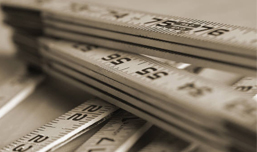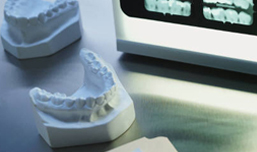Prod Designs' industry expert explains what 3D printing is
3D printing is an additive process which is capable of turning virtually any digital model into a three-dimensional solid object.
What is it?
To begin with a digital CAD (Computer Aided Design) file is created using a 3D modelling program or scanned using a 3D scanner. Software within a CAD modelling programme then divides the design into hundreds, sometimes thousands of horizontal layers, and plans the build path for the 3d printer to follow. Unlike other manufacturing methods that rely on the removal of material (subtractive process), the 3D printer then follows the built path constructing the model by adding material where required layer by layer, hence the name additive process.
 3D printing is the generic term for the process of a machine creating a 3-Dimensional object layer by layer, and in fact covers a range of different 3D printing technologies and methods. The two most common are Fused Deposition Modelling (FDM) and Selective Laser Sintering (SLS). An FDM printer works in a similar manner to an everyday inkjet printer, moving side to side and depositing material where required by depositing an extruded melted material through the nozzle in its print head, which solidifies as it leaves the print head. The difference is that the 3D printer is capable of moving in an extra axis vertically), and on completion of a layer it moves up and begins the next. Where a layer, requires material to be deposited where there would be none on the layer below, a support
material can be laid, which can be removed after the print is completed. Often this support material is a cellulose based material, and so simply breaks down in a bath of a strong alkalis leaving only the required print.
3D printing is the generic term for the process of a machine creating a 3-Dimensional object layer by layer, and in fact covers a range of different 3D printing technologies and methods. The two most common are Fused Deposition Modelling (FDM) and Selective Laser Sintering (SLS). An FDM printer works in a similar manner to an everyday inkjet printer, moving side to side and depositing material where required by depositing an extruded melted material through the nozzle in its print head, which solidifies as it leaves the print head. The difference is that the 3D printer is capable of moving in an extra axis vertically), and on completion of a layer it moves up and begins the next. Where a layer, requires material to be deposited where there would be none on the layer below, a support
material can be laid, which can be removed after the print is completed. Often this support material is a cellulose based material, and so simply breaks down in a bath of a strong alkalis leaving only the required print.
SLS printers work in a very different manner. With the SLS method the entire print bed is covered with a layer of powdered material. A laser beam then fuses the powder together where solid material is required, before the bed is covered with another layer of powder and the process is repeated for the next layer. With SLS the support material is provided by the unfused powder, which at the end of a build can be removed and reused on the next print.
What is it capable of?
 3D printing already has a wide range of applications and its capabilities are growing rapidly, with new uses being pioneered and developed every day. Currently 3D printers are capable of printing with a broad range of materials, including production-grade plastics and metals and the SLS printers are able to produce prints with a high degree of accuracy, with each build layer thickness being only 0.06mm. 3D printing is widely used to create prototypes for testing and development, rapidly accelerating a product's design development. The machines are also able to produce final products in certain examples, and now more than 20% of the output of 3D printers is final products rather than prototypes, with that figure predicted to grow to 50% by 2020. Even fashion and jewellery design is seeing an adoption of the capabilities the technology affords.
3D printing already has a wide range of applications and its capabilities are growing rapidly, with new uses being pioneered and developed every day. Currently 3D printers are capable of printing with a broad range of materials, including production-grade plastics and metals and the SLS printers are able to produce prints with a high degree of accuracy, with each build layer thickness being only 0.06mm. 3D printing is widely used to create prototypes for testing and development, rapidly accelerating a product's design development. The machines are also able to produce final products in certain examples, and now more than 20% of the output of 3D printers is final products rather than prototypes, with that figure predicted to grow to 50% by 2020. Even fashion and jewellery design is seeing an adoption of the capabilities the technology affords.
Why should we embrace it?
Believe it or not, 3D printing is not a new concept, and has actually been around for nearly 30 years dating back to around 1986. So, in many respects it has already been embraced. However, we are at stage now where the technology is progressing forwards in leaps and bounds in a number of areas, with this development really accelerating and the goals of the areas of advancement are definitely worth working towards.
 The reduction in cost of the simpler printers (and increase in print accuracy at that level), as well as the improvements and accessibility to 3D computer modelling software has given rise to a booming industry of 'Makers'; engineers, designers, 3D artists and hobbyists who are designing and manufacturing their own products on a small scale. It is also allowing a higher degree of customisation within products, with people able to design and produce their own replacement/alternative parts. This is a trend that is starting to be embraced by large companies, such as Nokia who released the 3D CAD files to their smartphone case, enabling owners to design their own attachments and changes to the case, and print their own version.
The reduction in cost of the simpler printers (and increase in print accuracy at that level), as well as the improvements and accessibility to 3D computer modelling software has given rise to a booming industry of 'Makers'; engineers, designers, 3D artists and hobbyists who are designing and manufacturing their own products on a small scale. It is also allowing a higher degree of customisation within products, with people able to design and produce their own replacement/alternative parts. This is a trend that is starting to be embraced by large companies, such as Nokia who released the 3D CAD files to their smartphone case, enabling owners to design their own attachments and changes to the case, and print their own version.
3D printing is also aiding many industries in the rapid development of their concepts and products. It is now possible to simply print a prototype for testing within a few hours, meaning that products can progress through development process far more quickly. The reduced cost in comparison to manufacturing one-offs previously allows companies to produce prototypes at an earlier stage of development, as well as produce a much higher number, ensuring a better designed product at the end. Architects, Product Designers, Engineers, and even film-makers and games developers are now commonly using the technology as a way to quickly see their ideas coming to life.
3D printing is slowly but surely progressing from an technique used in the development of a product, to becoming a full scale manufacturing technique in its own right. Where as a custom machined metal part can take weeks to construct and produces a lot of waste material, the 3D printing of metal now allows the piece to be produced in a matter of hours, with a much lower energy usage and no waste material. One example of this are the complex titanium landing-gear brackets being 3D printed in Bristol for the Airbus A380. In some respects 3D printing is even surpassing traditional manufacturing techniques, producing objects and shapes that were previously impossible, such as a ball joint already within a socket, hollowed centres and complex organic shapes.
3D printing is also driving forwards development in the integration of more environmentally efficient electronics and renewable energy sources in consumer electronics. The ability to 3D print silver (one of the key elements in semiconductors, dielectrics and various other circuits on paper thin materials) means there is huge potential for the ability to 3D print batteries, solar strips and sensors into products such as phone cases, saving space, materials and providing green energy in-built into devices.
 The final area that is seeing a massive growth in application is within medicine. The 3D printing of replacement body parts such as hips and jaws have already been used in the facial reconstruction of a man in Belgium. It is even currently possible, though still at a development phase, to 3D print live tissue, already being able to create simple organs such as bladders with a view to print more complex organs such as the heart. With huge waits for organ donors, as this technology improves and becomes more commonplace, it is possible that 3D printing may one day save your life.
The final area that is seeing a massive growth in application is within medicine. The 3D printing of replacement body parts such as hips and jaws have already been used in the facial reconstruction of a man in Belgium. It is even currently possible, though still at a development phase, to 3D print live tissue, already being able to create simple organs such as bladders with a view to print more complex organs such as the heart. With huge waits for organ donors, as this technology improves and becomes more commonplace, it is possible that 3D printing may one day save your life.
If you have any questions on this article please contact us.


Jo Berg at Prod Designs
Joe Berg explains the technology, what it is capable of and why we should embrace it.
"3D printing is also driving forwards development in the integration of more environmentally efficient electronics and renewable energy sources in consumer electronics."

